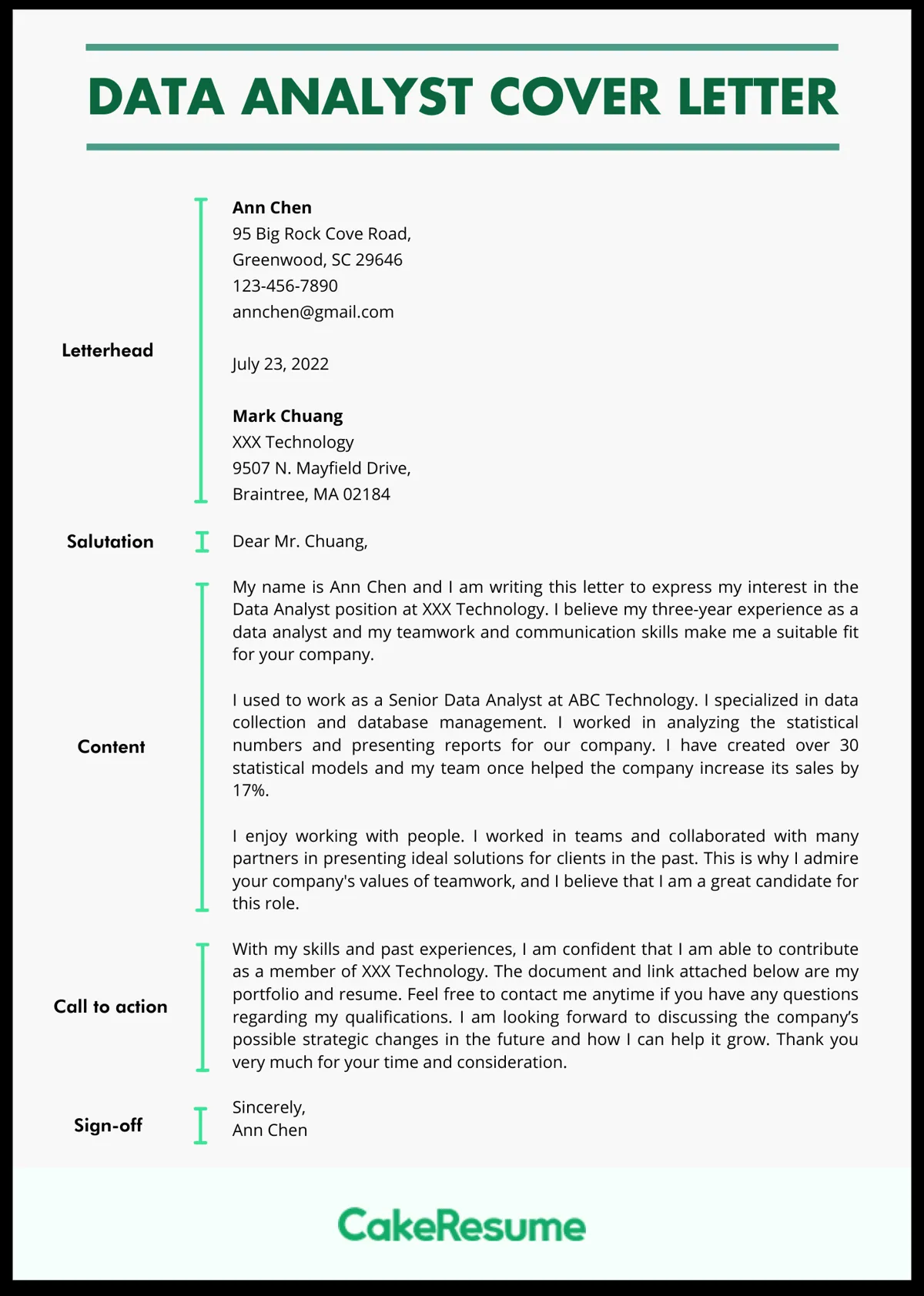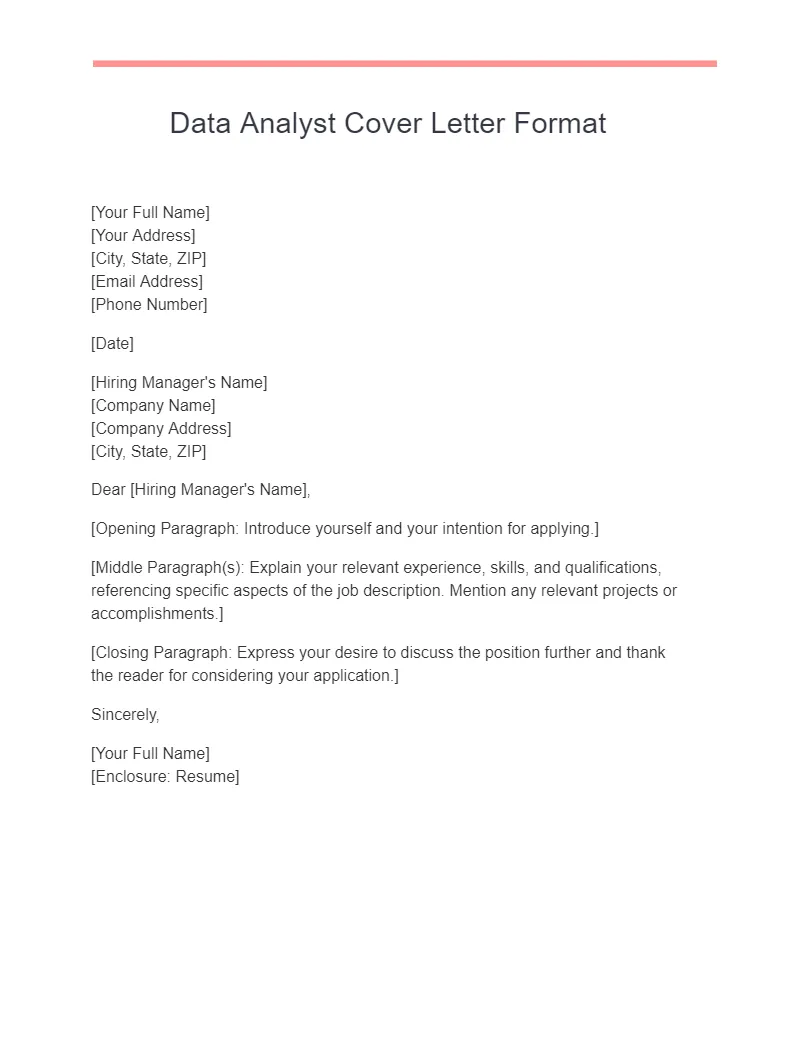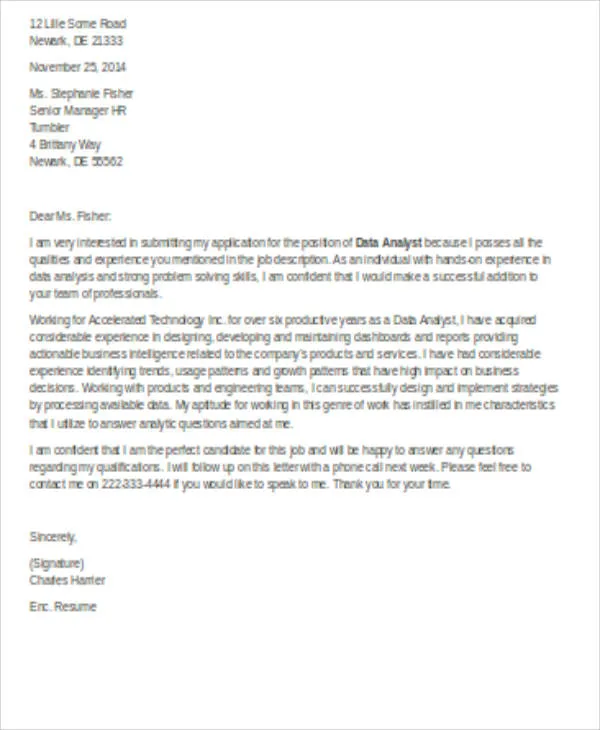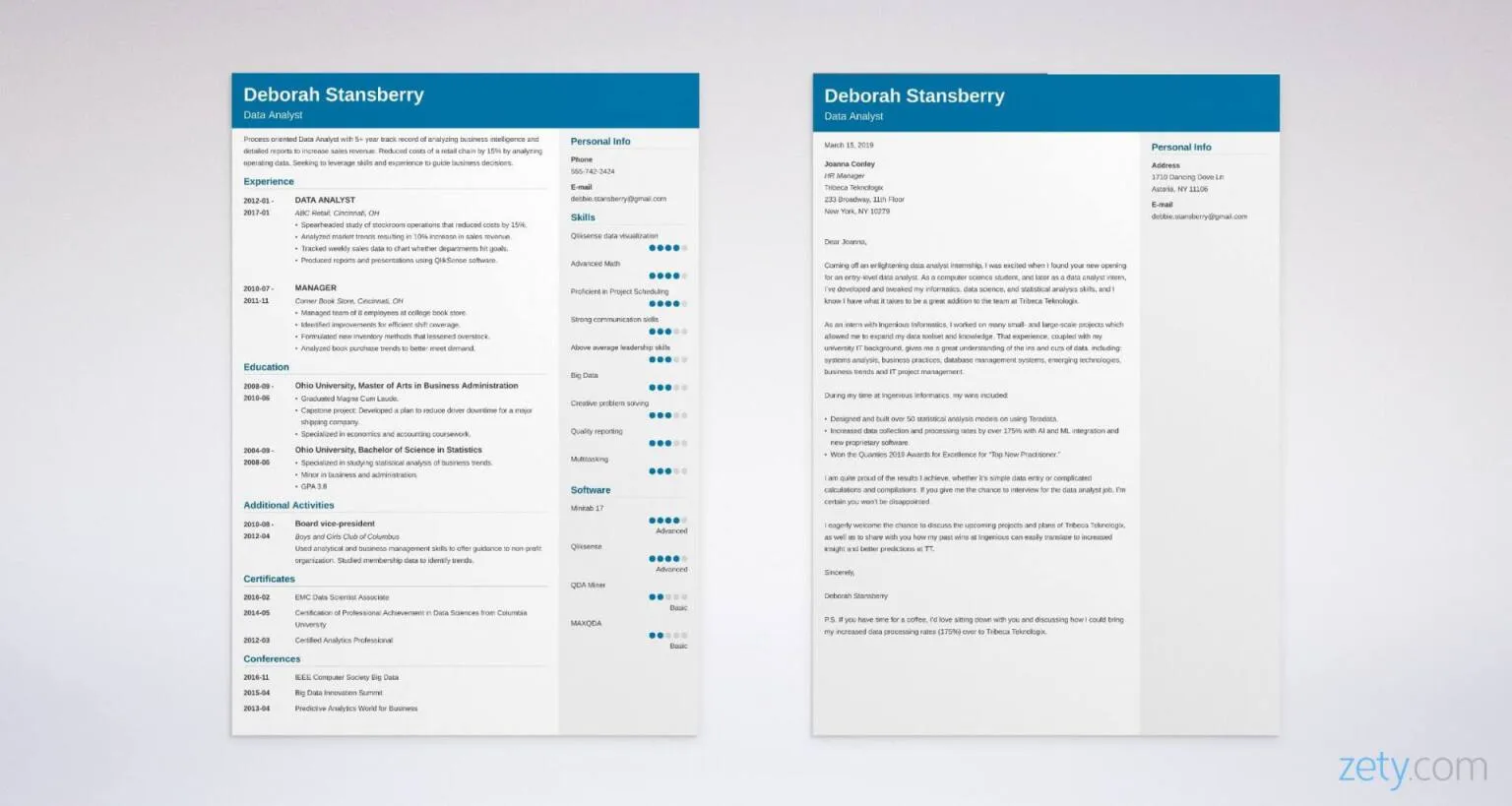Understanding the Data Analyst Cover Letter
A data analyst cover letter is your first introduction to a potential employer. It’s your chance to showcase your skills, experience, and enthusiasm for the role, setting you apart from other applicants. Unlike your resume, which presents facts, the cover letter provides an opportunity to tell your story, explaining why you’re the perfect fit for the position and the company. It’s a crucial document because it gives context to your resume and demonstrates your communication skills, attention to detail, and genuine interest in the specific job. A well-crafted cover letter significantly increases your chances of landing an interview. It should be tailored to each job application, highlighting the most relevant skills and experiences that align with the employer’s needs and expectations.
Key Components of a Data Analyst Cover Letter
A compelling data analyst cover letter includes several key components. Begin with your contact information and a professional salutation. Then, capture the hiring manager’s attention by highlighting your most relevant skills and experience. Provide specific examples and quantifiable achievements to demonstrate your impact. Tailor your letter to the job description by addressing the key requirements and keywords. Express your passion for data analysis and explain why you’re interested in the company. Maintain a professional tone and format throughout, ensuring the letter is easy to read and visually appealing. Proofread meticulously for any errors, and conclude with a clear call to action, expressing your eagerness to discuss your qualifications further. These elements work together to create a persuasive and memorable cover letter.
Contact Information & Salutation

Start your cover letter with your full name, address, phone number, and email address. This information should be clearly displayed at the top. If known, address the hiring manager by name; this shows you’ve done your research and shows genuine interest. If you are unable to find a name, use a general greeting such as ‘Dear Hiring Manager’. Avoid generic greetings. The salutation sets the tone for the rest of your letter. It demonstrates attention to detail and a personalized approach. Using the hiring manager’s name is always preferable, it can significantly increase the impact of your application.
Highlighting Your Skills & Experience
In the body of your letter, describe your relevant skills and experience. Mention the specific tools and technologies you’re proficient in, such as SQL, Python, R, Tableau, or Power BI. Provide examples of projects where you’ve used these skills to solve problems or achieve results. Focus on the skills and experience that match the job description. Instead of listing every skill, select the most relevant ones and elaborate on how you’ve utilized them. This demonstrates to the employer your ability to use your skills. Show how these skills and experiences will allow you to do a great job on this specific role. It’s essential to strike a balance between listing and demonstrating.
Quantifiable Achievements
Whenever possible, quantify your achievements. Instead of saying, ‘Improved data analysis,’ state, ‘Improved data analysis accuracy by 15%.’ Use numbers to illustrate your impact. For example, ‘Developed a dashboard that reduced reporting time by 20%.’ Quantifiable achievements provide concrete evidence of your abilities and demonstrate your value. Include these in your letter to show your impact on your past employers. Specific metrics and numbers make your accomplishments more credible and memorable. They help the hiring manager understand the tangible benefits you can bring to the company.
Tailoring to the Job Description

Customize your cover letter for each job application. Carefully review the job description and identify the key requirements. Then, highlight the skills and experiences that align with those requirements. Use the same keywords and phrases from the job description to show the recruiter that you are a great fit for the role. Customizing your letter makes it clear that you’ve taken the time to understand the position and the company’s needs. This demonstrates your genuine interest and attention to detail. Tailoring your cover letter significantly increases your chances of getting an interview by showing you are not sending a generic application.
Showcasing Your Passion for Data
Express your genuine passion for data analysis. Explain why you’re excited about the company and the specific role. Talk about your interest in the company’s mission, products, or services, and why you want to work there. This shows the hiring manager that you are motivated and engaged. Your enthusiasm can set you apart from other candidates. Demonstrate your interest in the company’s work and the role itself, and explain why you’re excited about the opportunity. Let the recruiter know that you are the best candidate.
Formatting and Tone
Formatting Your Cover Letter

Use a professional format for your cover letter. Choose a clean and easy-to-read font, such as Arial or Times New Roman, with a font size between 10 and 12 points. Use single spacing with a space between each paragraph. Keep the letter concise, ideally no more than one page. Break up large blocks of text with paragraphs. Ensure your cover letter is well-structured with clear sections and headings, and use a consistent style throughout the document. Proper formatting makes your cover letter look professional and easy to read, which is critical for a positive first impression.
Tone and Language
Maintain a professional and confident tone throughout your cover letter. Use clear, concise language, and avoid jargon. Proofread carefully for any grammatical errors or typos. Be enthusiastic but avoid sounding overly eager or desperate. Show your personality, but keep the tone professional. The tone and language of your cover letter should reflect your professional demeanor and attention to detail. Ensure that the letter conveys your skills, enthusiasm, and interest in the position effectively. Proper grammar and tone reflect positively on your candidacy and make a good impression on the hiring manager.
Call to Action
End your cover letter with a clear call to action. Express your eagerness to discuss your qualifications further. Include a statement like, ‘I am eager to learn more about this opportunity and discuss how my skills and experience align with the needs of your team.’ Thank the hiring manager for their time and consideration. This helps make your cover letter more professional. Providing a clear call to action encourages the hiring manager to take the next step and consider you for an interview. Showing your enthusiasm for the opportunity is the best method to have your application reviewed.
Finalizing and Submission

Before submitting your cover letter, proofread it meticulously. Check for any grammatical errors, typos, and inconsistencies. Ensure that the format is correct and that all information is accurate. Consider having a friend or mentor review it. This helps to catch any errors you might have missed. Saving your cover letter as a PDF will help it look the same on any device. Make sure you save it with a clear name to the document. Prepare to be hired by following these simple guidelines and tips. By taking these extra steps, you’ll present a polished, professional application that showcases your abilities and maximizes your chances of landing your dream data analyst job.
